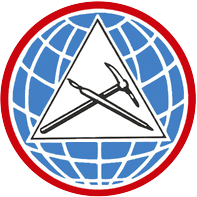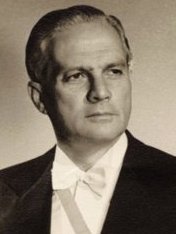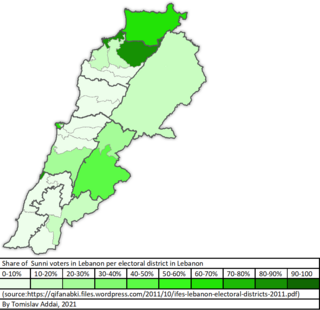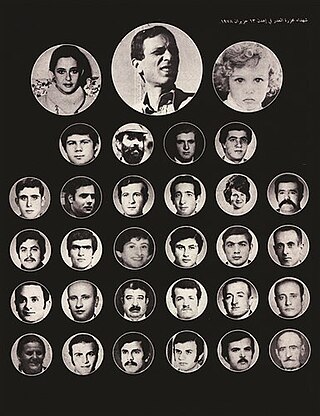The following is a list of massacres that have occurred in Lebanon (numbers may be approximate):
| Name | Date | Location | Deaths | Victims | Perpetrators | Notes |
|---|---|---|---|---|---|---|
| Siege of Tyre (332 BC) | 332 BC | Tyre | 2,000 | Tyrians | Ancient Macedonian army | 2,000 Tyrians crucified on the beach by Alexander the Great's army |
| 1860 Mount Lebanon civil war | July 9–11, 1860 | Beirut and Damascus, Syria | 7,000–25,000 | Christians | | Large massacres of Christians at Deir al-Qamar, Hasbaya, and Rashaya took place in Mount Lebanon. Many fled to Damascus, where Druze and Muslim mobs with the help of rogue Ottoman troops massacred several thousand Christian civilians; 326 villages, 560 churches, 28 colleges, 42 convents, and 9 other religious establishments were completely destroyed. |
| Execution of Arab nationalists | May 6, 1916 | Beirut and Damascus, Syria | 23 | Arab Nationalists | | On May 6, 1916, Jamal Pasha publicly executed simultaneously seven Arabs in Damascus and fourteen in Beirut for alleged anti-Turkish activities. The date, May 6, is commemorated annually in both countries as Martyrs' Day, and the site in Beirut has come to be known as Martyrs' Square. |
| Ain Ebel massacre | May 5, 1920 | Ain Ebel | 50–100 | Christians | Shia Muslims and pro-Faisal gang | Mahmoud Bazzi's gang, which "proceeded from brigandage to confronting France and its Christian friends in the south," attacked Ain Ebel on May 5, 1920, pillaging and killing more than 50 people. The people of Ain Ebel defended the town from sunrise to sunset until they ran out of ammunition. The town was completely destroyed, and the damage done to the two churches, school and convent, was evidence of sectarian malice. |
| Tripoli student massacre | November 13, 1943 | Tripoli | 14 | Student protesters | French-Senegalese soldiers | The students were struck by French tanks driven by Senegalese soldiers while participating in a peaceful march through the streets. During the demonstration, the students were fervently advocating for an end to the occupation. [1] [2] [3] [4] All the victims were under the age of 15. |
| Hula massacre | October 31, 1948 | Hula | 35–58 | Lebanese | Carmeli Brigade, | Hula, located in Lebanon, was captured on October 24 by the Carmeli Brigade of the Israel Defense Forces without any resistance. The women and children were expelled, most of the men aged between 15 and 60 were shot. In total between 35 and 58 men were executed in a house which was later blown up on top of them. [5] |
| Miziara massacre | June 16, 1957 | Miziara | 30 | Douaihy clan | Frangieh clan | Sleiman Frangieh and his followers killed 30 loyalist to the Douaihy family in a church in Miziara. Victims included nuns, priests, women and children. [6] |
| Bus massacre | April 13, 1975 | Beirut | 27 | | On the morning of 13 April 1975, PLO gunmen in a speeding car fired on a church in the Christian East Beirut suburb of Ain el-Rummaneh, killing four people, including two Maronite Phalangists. Hours later, 27 Palestinian civilians traveling in a bus through one of the Ain el Rummaneh neighborhoods of Beirut were attacked and killed by Christian Phalangists. Many more people were killed in subsequent fighting in other areas of the city later that day. Together, these incidents have been identified by several historians as the starting point of the Lebanese Civil War. | |
| Black Thursday | May 30, 1975 | Bashoura, Beirut | 30–50 | Christians | Palestinians | The bodies were abandoned in a Muslim cemetery, with possible intension of provoking a sectarian message, close to the Green Line separating East and West Beirut, all with their genitals mutilated off. [7] |
| Beit Mellat Massacre | September 10, 1975 | Beit Mellat, Akkar | 15–25 | Christians | Palestinians and Syrians | Between five and eight civilians were killed, and ten has disappeared. Also, the militiamen burned down homes and the church, and stole several cars. [7] |
| Black Saturday | December 6, 1975 | Beirut | 300–350 | Muslims, Druze | Four young Christian Phalangists were assassinated on the Fanar (Matn) road in Beirut. In retaliation, Phalangists murdered hundreds of non-Christians. It is estimated that more than 300 civilians were murdered in what was the first ethnic cleansing of the Lebanese Civil War. | |
| Karantina massacre | January 18, 1976 | Beirut | 300–1,500 | Palestinians and Lebanese Muslims | Karantina was an impoverished predominantly Muslim district — housing Lebanese and Palestine refugees, as well as others — in northeastern Beirut, and was overrun by the Lebanese Christian militias. | |
| Damour massacre | January 20, 1976 | Damour | 582 [8] | Christians | Palestine Liberation Organisation, Lebanese National Movement | PLO and LNM units attacked a Christian town, purportedly as revenge for the earlier Karantina Massacre by Christian militias. Among those killed were Phalangist militiamen and family members of Christian militia leader Elie Hobeika, and his fiancée. Hobeika later led the Phalangists in the Sabra and Shatila massacre. |
| Chekka massacre | July 5, 1976 | Chekka and Hamat | 200 | Christians | Lebanese National Movement | The attack was launched from Tripoli by Palestinian militants and members of a left-wing group called Jund Allah. The group stormed the Christian pro-Syrian Social Nationalist Party settlement of Chekka as well as Hamat. An estimated 200 people were killed in the ensuing 24 hours. Residents tried to flee through a tunnel to Batroun but the attackers blocked the exit. Many were killed as their cars caught fire, and they suffocated to death. [9] |
| Tel al-Zaatar massacre | August 12, 1976 | Beirut | 1,500–5,000 | Palestinians | Christian Phalangists and other rightwing Christian militias besieged Tel Al-Zaatar with help from Syrian Army units; after heavy fighting, they killed Palestinian civilian refugees and PLO fedayeen or fighters. 4,000 injured. | |
| Aishiyeh massacre | October 19–21, 1976 | Aishiyeh | 60–80 | Christians | Fatah, As-Sa'iqa | Fatah and As-Sa'iqa massacred the predominantly Christian village, including seven under 16yo, although the killings were overshadowed by the massacres of Tel al-Zaatar and Damour earlier the same year. |
| Maasser Beit Eddine executions | October 28, 1976 | Maasser Beit Eddine | 16 | Christians | 16 Christian civilians, including a family of eight, were killed by PSP members in Maasser Beit ed-Dine. [10] | |
| Chouf massacres (1977) | 1977 | Chouf | 135+ | Christians | Series of massacres and forced displacements on Christian civilians following Kamal Jumblatt's death. [11] | |
| St George's Church attack | August 21, 1977 | Brih, Chouf | 13 | Christians | | Druze leftist gunmen attacked St George's Church during prayers on Sunday with automatic gunfire inside and around the church killing 13 people. [12] |
| Ehden massacre | June 13, 1978 | Ehden | 40 | Marada Movement | It was an inter-Christian attack that occurred between the Maronite clans. [13] [14] A Phalangist squad attacked the mansion of Frangieh family in an attempt to capture Ehden, killing nearly 40 people including Tony Frangieh, his spouse and his three-year-old daughter, Jihane. [15] [16] After the massacre, the power of the Frangiehs is reported to have declined. [17] | |
| Qaa massacre | June 28, 1978 | Qaa | 26 | Marada Movement | Said to be revenge after the death of Marada leader Tony Frangieh in the Ehden massacre. | |
| Safra massacre | July 7, 1980 | Safra | 83 | | ||
| Dahr al-Wahsh massacre | October 1990 | Dahr al-Wahsh, Aley | 75–80 | Lebanese | Dahr al-Wahsh has received attention as the site of an October, 1990 conflict termed the "Dahr al-Wahsh massacre" by Middle-East studies professor Mordechai Nisan. [18] Interpretation and description of the event varies according to source. | |
| Sabra and Shatila massacre | September 16, 1982 | West Beirut | 460–3,500 | Palestinians and Lebanese Shiites | Sabra and Shatila were Palestinian refugee camps housing both Sunni and Christian Palestinian refugees, as well as some poor Lebanese and Kurds. The Phalanges attacked the camp in retaliation for the assassination of President Bachir Gemayel. | |
| Mountain war massacres | 1983 | South Mount Lebanon | 1,500 - 3,500 | Christians | | Druze forces massacred hundreds of Christian civilians, ethnically cleansing South Mount Lebanon from Christian presence. |
| 1983 United States embassy bombing | April 18, 1983 | Beirut | 63 | Lebanese and Americans | Islamic Jihad Organization | Islamic militants bombed United States embassy |
| 1983 Beirut barracks bombing | October 23, 1983 | Beirut | 307 | Americans, French and Lebanese | Islamic Jihad Organization | Victims were mostly American Marines. |
| 1984 Sohmor massacre | September 20, 1984 | Sohmor | 13 | Lebanese | South Lebanon Army, Israel Defence Forces | |
| War of the Camps | May 1985 | West Beirut | 3,781 | Palestinians | Shi'ite militias, | Sabra, Shatila and Burj el-Barajneh Palestinian refugee camps were besieged and bombed by the Shi'ite Amal militia, with Syrian Army support. 6,787 injured. Some activity occurred after May 1985 |
| October 13 massacre | October 13, 1990 | Beirut | 740–940 | Lebanese | 2000 injured; Maronite Lebanese soldiers and civilians were killed by Syrian forces after surrender. | |
| Mansouri attack | April 13, 1996 | Mansouri | 6 | Lebanese | | |
| Nabatieh Fawka attack | April 16, 1996 | Nabatieh Fawka | 9 | Lebanese | | |
| First Qana Massacre | April 18, 1996 | Qana | 106 | Lebanese | | The Israel Defense Forces fired artillery shells at a United Nations compound, which had given refuge to 800 Lebanese civilians. 116 injured in addition to 106 deaths. |
| Second Qana Massacre | July 30, 2006 | Qana | 28 | Lebanese | ||
| Marjayoun Convoy Inicident | August 11, 2006 | Kefraya | 7 | Lebanese + Red Cross | | The IDF bombed a 359 vehicles convoy which was granted right of safe passage from the IDF, mediated through the UNIFIL. A reporter confirmed that the Red cross and Civil defense coming to aid the convoy were also bombed, which resulted in the death of a Red Cross volunteer |









